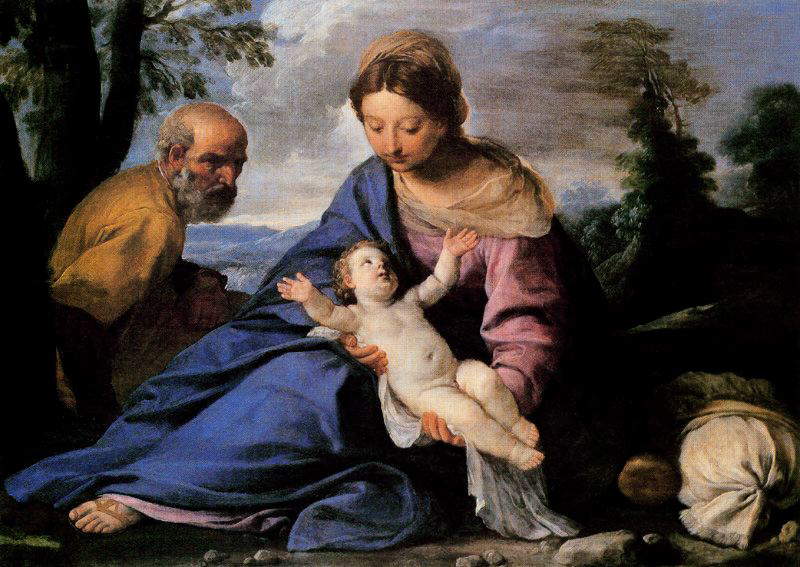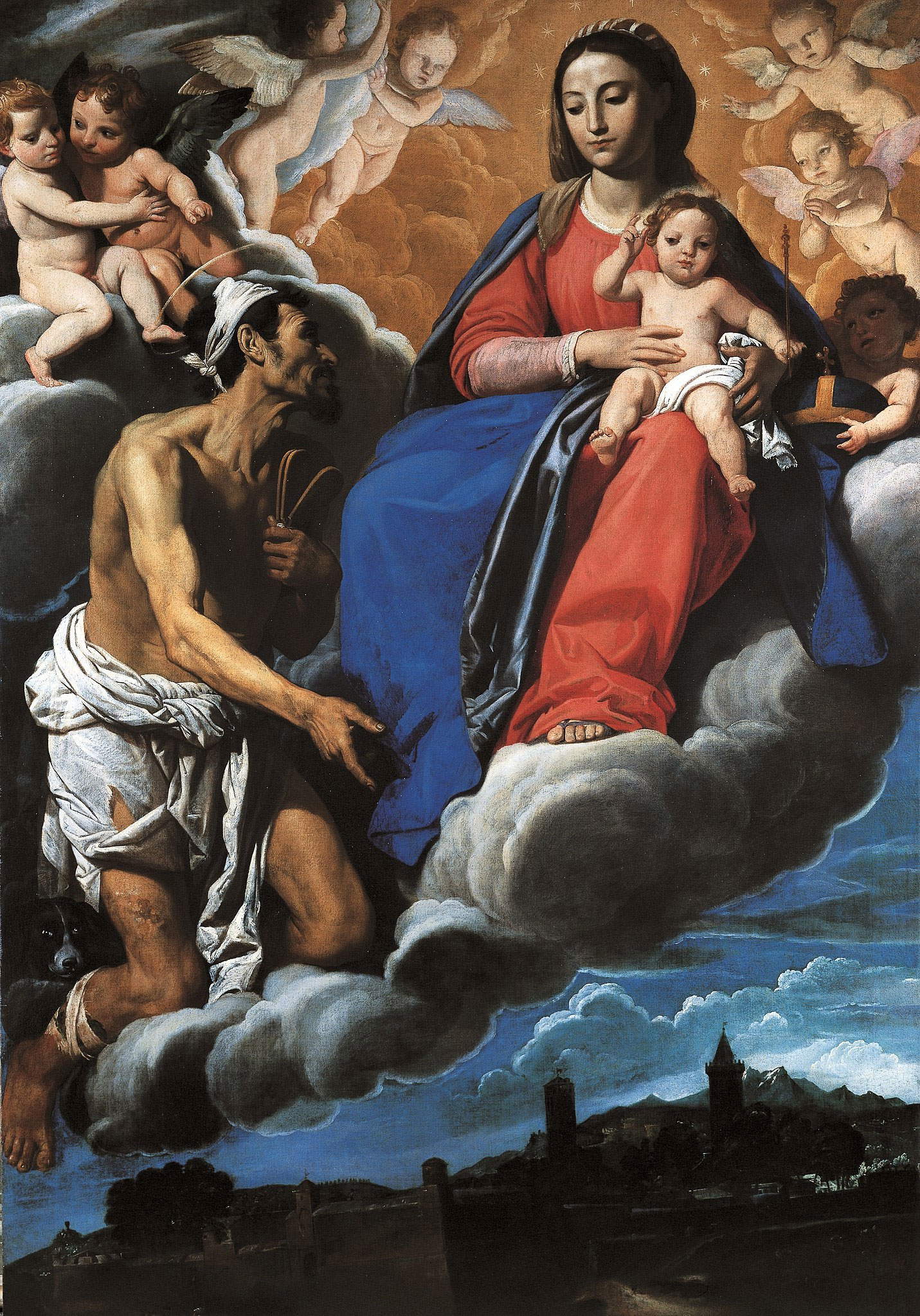Alongside painters of strict Caravaggesque or classicist observance, the seventeenth century saw the flourishing of several personalities who produced an art placed halfway between the two tendencies: these were either artists who were born Caravaggesque and then mitigated the extreme peaks of their art with atmospheres derived from classicist painting, or classicists who wished to infuse more naturalism into their works, and again artists who started from different experiences and, fascinated by both Caravaggesque and naturalism, proposed an intermediate solution.
The most original and interesting of these artists was the Romagnolo Guido Cagnacci (Santarcangelo di Romagna, 1601 - Vienna, 1663), who never had a real master but preferred to build his style by observing from afar the achievements of the greatest painters of his time. Starting with a meditation on the devout compositions of Ludovico Carracci, the first artist by whom he was influenced, Cagnacci stayed in Rome as a young man (during his stay in the capital of the Papal States he lived together with Guercino) and was fascinated by the art of the Caravaggeschi. However, Cagnacci did not look directly to Caravaggio, but rather to the early Caravaggesque painters active in the capital, such as Gentileschi, Borgianni, and Serodine: through these experiences, Cagnacci was able to infuse his works with a vivid naturalism.
Cagnacci then returned to Emilia and approached the painting of Guido Reni through whom he infused a greater lyricism and delicacy into his compositions, without, however, abandoning those bases of sensuality and not even too veiled eroticism that make Cagnacci’s painting unique and highly original: probably, Cagnacci was the most finely sensual painter of the entire seventeenth century (as well as among the freest, and precisely because of his freedom, success did not come to him and he had a rather difficult life). Sensuality, naturalism and lyrical sweetness come together beautifully in one of his greatest masterpieces, Magdalene Taken to Heaven (here in the 1642-1645 version, Florence, Palazzo Pitti: read an article on the work here).

Similar in some ways to Guido Cagnacci was another “outcast” artist, Simone Cantarini (Pesaro, 1612 - Verona, 1648): precocious talent (so much so that he pretended to be a novice painter when he entered Guido Reni’s workshop, although in Marche, his homeland, Simone Cantarini was already an established artist). In Le Marche, Cantarini became acquainted with the painting of Orazio Gentileschi, from whom he derived the ability to accurately depict the physicality of characters and the attention to the natural, and then updated his style according to the delicacies of Guido Reni.
Compared to Guido Cagnacci, Simone Cantarini elaborated a more monumental art(Rest during the Flight into Egypt, c. 1635-1637, Paris, Louvre) and from the more airy compositional frameworks that oriented his art toward a more fully Baroque poetics and that in some cases were also a source of inspiration for Cagnacci. His talent was cut short by his untimely death at the age of only thirty-six, which was probably also provoked by his arrogant and violent character, as some scholars speculate, though without documentary certainty, that he was murdered by a rival painter. Cantarini’s style appears so distinctly classicist that it is possible to speak of naturalist classicism.

More markedly Caravaggesque was the art of a painter who spread the lesson of Michelangelo Merisi in Tuscany, namely Pietro Paolini (Lucca, 1603 - Rome, 1681), who, however, was fascinated above all by the art of Bartolomeo Manfredi (as shown in Concerto a cinque figure, c. 1635-1640, Francesco Micheli Collection). Pietro Paolini, Lucca’s greatest painter of the seventeenth century, was the author of profoundly realist scenes and interesting portraits of commoners , but also of works in which meditation on Rhenish classicism found greater expression(read an in-depth study here).
Finally, one of the greatest exponents of this kind of art halfway between naturalism and classicism was the Ligurian Domenico Fiasella (Sarzana, 1589 - Genoa, 1669): Fiasella in particular began on late Mannerist foundations, but thanks to a stay in Rome he soon encountered both the art of the Caravaggeschi (mediated by the lesson of Orazio Gentileschi) and that of the Bolognese (his main point of reference was above all Domenichino). These tendencies are particularly evident in one of his masterpieces, St. Lazarus Asks Our Lady for Protection for the City of Sarzana (1616, Sarzana, San Lazzaro: read an in-depth discussion of the work here), where the classicism of the Madonna contrasts with the naturalism of St. Lazarus. Domenico Fiasella was probably the artist who was able to conjoin the trends of seventeenth-century art into more harmonious and homogeneous forms. Certainly, of the artists presented here, he was the most successful.


 |
| Seventeenth-century art between classicism and naturalism. Artists, styles, works |
Warning: the translation into English of the original Italian article was created using automatic tools. We undertake to review all articles, but we do not guarantee the total absence of inaccuracies in the translation due to the program. You can find the original by clicking on the ITA button. If you find any mistake,please contact us.